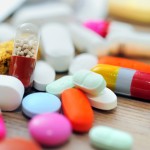
Salivary gland dysfunction is a very exceedingly common side effect of radiotherapy to the head and neck and is associated with a wide range of oral problems, including oral discomfort, difficulties in chewing and swallowing, problems with speech caries, oral candidiasis, oral infections as well as a significant reduction in quality of life.
The aim of this Cochrane review was to assess the effects of pharmacological interventions for the prevention of radiation-induced salivary gland dysfunction.
Methods
Searches were conducted in the Cochrane Oral Health’s Trials Register, the Cochrane Central Register of Controlled Trials (CENTRAL) Medline, Embase, CINAHL, LILACS, Zetoc Conference, OpenGrey (1997 to 14 September 2016). We searched the US National Institutes of Health Ongoing Trials Register (ClinicalTrials.gov) and the World Health Organization International Clinical Trials Registry Platform with no restrictions on the language or date of publication.
Randomised controlled trials (RCTs) of any pharmacological agent regimen, prescribed prophylactically for salivary gland dysfunction prior to or during radiotherapy, against placebo, no intervention or an alternative pharmacological intervention were considered.
Study selection, data abstraction and risk of bias assessments was carried out independently by two reviewers. Continuous outcomes were reported as mean differences or standard mean differences with 95% confidence intervals (CIs). Dichotomous outcomes were reported as risk ratios (RR) with 95% CIs. For comparisons involving more than one study a summary of findings table was produced using GRADE methods.
Results
- 39 parallel group studies involving 3520 patients were included.
- All of the studies were for patients having radiotherapy to the salivary glands for cancer of either head and neck sites (36 studies) or nasopharyngeal (3 studies).
- 32 studies were considered to be at high risk of bias, 4 unclear risk and 3 at low risk.
- The studies produced 14 comparisons with meta-analysis being possible for 3.
- 11 studies evaluated amifostine providing some low quality evidence (3 studies, 119 patients) that it reduced the risk of developing grade ≥ 2 xerostomia (0 to 4 scale) at end of radiotherapy RR= 0.35,(95%CI; 0.19 to 0.67) P = 0.001 and to a lesser extent at 3 months after radiotherapy RR= 0.66, (95%CI; 0.48 to 0.92) P = 0.01. At 12 months postradiotherapy, there was insufficient evidence.
- There was inconsistent (very low-quality) evidence regarding the effect of amifostine on salivary flow rate. There was also very low quality evidence to show that amifostine compromised the effects of cancer treatment when looking at survival measures. However there was very low-quality evidence of a small benefit for amifostine in terms of quality of life
- There was low-quality evidence that amifostine is associated with increases in:
- vomiting (RR 4.90, 95% CI 2.87 to 8.38; P < 0.00001, 5 studies, 601 participants); hypotension (RR 9.20, 95% CI 2.84 to 29.83; P = 0.0002, 3 studies, 376 participants);
- nausea (RR 2.60, 95% CI 1.81 to 3.74; P < 0.00001, 4 studies, 556 participants); and
- allergic response (RR 7.51, 95% CI 1.40 to 40.39; P = 0.02, 3 studies, 524 participants).
- Pilocarpine was evaluated in 12 trials-There was insufficient evidence (of very low quality) to determine if it was better or worse than a placebo or no treatment control for the outcomes: xerostomia, salivary flow rate, survival, and quality of life. But was some low-quality evidence ( 5 studies,389 patients) that it increased sweating RR= 2.98, (95%CI; 1.43 to 6.22) P = 0.004.
- Palifermin was evaluated in 3 trials but they provided insufficient evidence to determine whether or not palifermin performed better or worse than placebo for: xerostomia (low quality); survival (moderate quality); and any adverse effects.
- There was also insufficient evidence to determine the effects of the following interventions: biperiden plus pilocarpine, Chinese medicines, bethanechol, artificial saliva, selenium, antiseptic mouthrinse, antimicrobial lozenge, polaprezinc, azulene rinse, and Venalot Depot (coumarin plus troxerutin).
Conclusions
The authors concluded:-
There is some low-quality evidence to suggest that amifostine prevents the feeling of dry mouth in people receiving radiotherapy to the head and neck (with or without chemotherapy) in the short- (end of radiotherapy) to medium-term (three months postradiotherapy). However, it is less clear whether or not this effect is sustained to 12 months postradiotherapy. The benefits of amifostine should be weighed against its high cost and side effects. There was insufficient evidence to show that any other intervention is beneficial.
Comments
While this well-conducted review identified a reasonable number of studies involving a number of interventions the evidence was insufficient to identify potential effective preventive approaches. One major issue was that even when there were a reasonable number of studies inconsistencies in the outcome measures and timing made comparisons difficult. In addition, many comparisons were only investigated in single studies at high risk of bias. Consequently the authors recommend that well conducted, well reported and adequately powered randomised controlled trials are needed, The also recommend the use of similar scales for the measurement of xerostomia using established standardised scales and the routine reporting of adverse effects.
Links
Primary paper
Riley P, Glenny AM, Hua F, Worthington HV. Pharmacological interventions for preventing dry mouth and salivary gland dysfunction following radiotherapy. Cochrane Database of Systematic Reviews 2017, Issue 7. Art. No.: CD012744. DOI: 10.1002/14651858.CD012744.
Other references
Cochrane Oral Health Group Blog
Amifostine may relieve symptoms of salivary gland dysfunction in head and neck cancer patients
Dental Elf -3rd Sep 2013
Insufficient evidence for effects of non-pharmacological interventions for the relief of dry mouth
